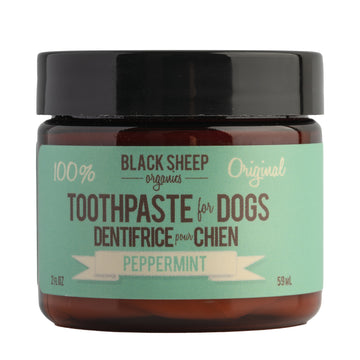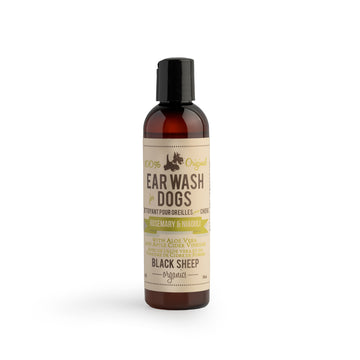Navigating the concerns of bumps on our dogs’ skin requires understanding their potential causes and finding appropriate solutions. This article aims to demystify the reasons behind these skin issues, ranging from allergies to infections, offering a clear pathway to address them. With a focus on practical advice and expert insights, we equip dog owners with the knowledge needed to ensure their pet's health and comfort.
Bumps on Dogs Skin: An Overview
The skin of a dog, much like human skin, can be a mirror to its overall health. Warts, or viral papillomas, are common in younger dogs and typically form around the mouth. These are caused by a virus and, in most cases, will resolve without intervention. Skin tags, button tumors, and abscesses also represent common skin bumps encountered by dogs of all ages. Superficial bacterial folliculitis, manifesting as sores, bumps, and scabs, is another condition that points to an infection affecting the superficial layers of the skin.
Among the benign growths, lipomas are frequently found in older dogs. These fatty tumors are more prevalent in obese dogs but are generally not a cause for concern unless they impair movement or function. Histiocytomas present as fast-growing red bumps that, despite their alarming appearance, are usually benign. While many skin bumps are non-threatening, early detection of those that are symptomatic of deeper health issues can significantly impact treatment outcomes.
Steps to Take if You Discover Hidden Bumps
Regular grooming and skin examinations are paramount in early detection of skin issues, including bumps under the fur. This proactive approach allows for early intervention and management, potentially preventing the development of more serious conditions.
- Conduct Regular Examinations: Familiarize yourself with your dog's skin and coat through regular grooming. This makes it easier to notice when something is amiss.
- Monitor Changes: Keep track of any changes in the size, color, or texture of the bumps. Note if they seem to cause discomfort to your dog.
- Record Findings: Documenting your observations can provide valuable information to your veterinarian if a consultation becomes necessary.
How to Safely Check Your Dog for Hidden Bumps?
If you come across a lump or bump while grooming your dog, there are a few things to keep in mind to ensure their safety and comfort during the examination process.
- Be Gentle: Use soft, circular motions to feel for bumps under the fur, being careful not to press too hard.
- Use a Systematic Approach: Start from one area and move methodically to ensure you cover the entire body.
- Look for Other Signs: Besides bumps, watch for signs of irritation, redness, or hair loss which might indicate underlying issues.
Allergy Bumps on Dogs: What You Need to Know
Allergies in dogs can manifest through various symptoms, with skin bumps being one of the more common and visible signs. These reactions are the body's way of responding to substances it considers foreign or harmful, leading to discomfort and sometimes more serious health issues for your furry friend.
Understanding Allergies in Dogs
Dogs can be allergic to a wide range of substances, but certain allergens are more common culprits behind the skin bumps and other allergic reactions observed in canines. According to VCA Hospitals, the most frequent food allergens include proteins from sources like dairy, beef, chicken, chicken eggs, soy, and wheat gluten. On the environmental side, chemicals in grooming products, tree pollens (such as cedar, ash, oak), grass pollens, weed pollens (like ragweed), molds, mildew, and house dust mites are significant allergens.
Common Allergens and Symptoms
The symptoms of allergies in dogs extend beyond skin bumps. They can also include excessive scratching, licking, redness of the skin, hair loss, and in the case of food allergies, even gastrointestinal issues. The American Kennel Club notes that environmental factors like dust, pollen, fungus, and mold can cause allergic reactions, which are often seasonal.
Strategies for Managing Allergies
Once allergens have been identified, strategies for managing allergies can include:
- Dietary adjustments: Switching to a diet free of the identified allergens can help control food allergies.
- Use shampoo made from organic ingredients: Avoid shampoo that contains chemicals for dogs with sensitive skin. Try use natural or organic dog shampoo and other grooming products.
- Environmental control: Keeping the home clean, using air purifiers, and avoiding walks during high pollen times can reduce exposure to environmental allergens.
- Medication: In some cases, veterinarians may prescribe medications to help manage the symptoms of allergies, including skin bumps.
Decoding the Red Bump on Your Dog
It's crucial to understand not all red bumps signify a grave health issue, but there are times when they warrant a closer look and possibly a visit to the vet. This section aims to guide you through differentiating between benign red bumps and those that could be signs of a more serious condition.
Recognizing When a Red Bump Is Serious
While many red bumps on your dog's skin may be harmless, certain characteristics and accompanying symptoms can indicate a more serious underlying issue. Here are key points to consider:
- Rapid Changes: A red bump that grows quickly over days or changes in color and texture could be a sign of a more aggressive condition.
- Discomfort and Behavioral Changes: If your dog seems bothered by the bump, constantly scratching or biting at it, or if there's a noticeable change in their behavior, such as lethargy or loss of appetite, these could be indicators of discomfort or pain associated with the bump.
- Ulceration and Bleeding: Bumps that are ulcerated or bleed easily need immediate veterinary attention. An ulcerated surface might suggest an infection or tumor that is breaking down.
Symptoms Accompanying Red Bumps That May Indicate a Serious Condition
Certain symptoms accompanying a red bump can also signal the need for a professional evaluation:
- Presence of Multiple Bumps: The sudden appearance of multiple red bumps could be indicative of an allergic reaction, parasitic infestation, or systemic issue.
- Associated Swelling: Swelling around the area, especially if it spreads, could point to an infection or inflammatory response.
- Lethargy or Other Systemic Signs: General signs of illness, such as fever, lethargy, or changes in eating habits, when occurring alongside a red bump, suggest the issue might not be localized and could be affecting your dog's overall health.











